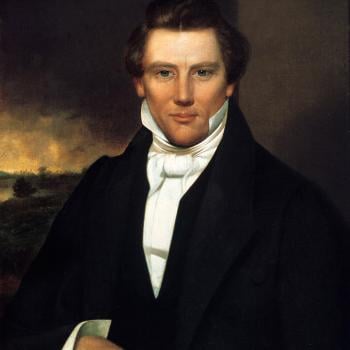Dr. Jeannine K. Brown (Bethel Seminary) is a widely recognized New Testament scholar who is especially known for her work on the Gospels. But she has also written an important work on biblical hermeneutics, now in its second edition (summer 2021): Scripture as Communication: Introducing Biblical Hermeneutics. I was grateful not only to receive the book from Dr. Brown, but also the opportunity to ask her some questions about this book and her approach to reading and interpreting Scripture. Enjoy! (And get the book!)
“Hermeneutics” is definitely a “seminary word.” Students see this word all the time, but maybe don’t really understand what it means. Can you concisely define hermeneutics, and especially how it is used in biblical studies?
Hermeneutics is related to interpretation. The easiest way to express it is that hermeneutics refers to the study of interpretation. Hermeneutics analyzes “how texts communicate, how meaning is derived from texts and/or their authors, and what it is that people are doing when they interpret a text” (Scripture as Communication, 2021, p. 10). Think of it this way: when we come to read Scripture, hermeneutics is at play before we even open the Bible, since we assume all sorts of things about the Bible, how we should read it, and what we should do with what we learn.
“Scripture as Communication.” OK, your basic approach is that the Bible is a form of communication. What do you mean by that? How does this book “fit” into the wider conversation about biblical interpretation?
By identifying the Bible as communication, I am affirming that all three parts of the communicative process—author, audience, and message—are essential for understanding any particular part of the Bible. Sometimes, at least in some circles, the words of the Bible are extracted from the communicative settings in which they make sense. By emphasizing how communication works between author and audience, including reliance on implicit meaning, we have a more holistic way of understanding how Scripture speaks. Because I rely on a communication model, I bring in perspectives from speech-act theory, relevance theory, and narrative theory to inform biblical interpretation.
What are some things that make your book different from other biblical interpretation/exegesis handbooks out there?
In the second half of my book, I turn to practical exegetical matters like analyzing genre, historical settings, and literary context (as in exegetical handbooks). I also address how to contextualize the biblical messages in contemporary settings. Yet woven through that second half of the book are connections to the first half, which is more theoretically based. In the earlier chapters, I wrestle with how to understanding the contested language of “meaning” in hermeneutical discussions and how to account for author, text, and reader holistically in the hermeneutical process.
This is a second edition. How has your thinking about hermeneutics changed since the first edition and what is new here?
While there is a sense of consistency between the two volumes related to understanding Scripture as communication, I am even more attentive in the second edition to the importance of readers and their locations for productive hermeneutical discussion. I have benefited from reading scholars whose communities have not been at the center of Western discourse about the Bible. And I rely on their work in this second edition. For example, Elizabeth Mburu has written an important book on African Hermeneutics (2019) that I engage in my second edition.
You are an experienced seminary professor. Can you tell us, when you teach biblical interpretation, what are your go-to textbooks and readings?
Our first course at Bethel Seminary is a hermeneutics course, and we want to bring equal parts theory and practice to that first experience with the Bible in a seminary program. I wrote Scripture as Communication early in my teaching career because our biblical studies team was having a hard time finding a textbook that did that dual introduction (hermeneutics and exegesis) and didn’t assume too much prior knowledge of its audience (for us, first semester seminary students, many without any prior formal Bible training).
I still teach the first-semester course at Bethel today and use my book in it. I supplement it with readings from scholars from quite different social and theological locations than myself so that students get a sense of the breadth of the scholarly conversation on hermeneutics. For instance, I love to introduce students to Dr. Amy-Jill Levine, whose work on Jesus with his Jewish context is so rich, given her own Jewish identity. For a post-colonial approach to the psalms, I introduce my students to David Adamo; and I could give other examples.
For an upper-level course on hermeneutics, I’d also want to have students read some of the foundational voices for present hermeneutical conversations, including Anthony Thistleton and Craig Bartholomew. Craig Keener’s recent Spirit Hermeneutics (2017) is also a thorough and accessible volume, introducing Pentecostal hermeneutics.
Trick question here: If the Bible is God’s message to humanity, why do we humans disagree so much on what various texts say and mean?
Great question! I’d go back to my earlier point about the importance of human locations in the interpretive process. We cannot attain a bird’s-eye (God’s-eye!) perspective on the text because we are finite and located. While we can, in community, understand better and more, our vantage points will always be limited. In grappling with this reality, I’ve appreciated the Eastern Orthodox perspective on human finitude and the search for truth: We can know God truly without claiming that we know God fully.
Thanks, Dr. Brown. What’s next on your writing agenda?
I have just completed final editing on my Philippians commentary in the Tyndale New Testament series, which will come out early in 2022. I so enjoyed writing on Paul, after many years focused primarily on the Gospels. My next projects include co-authoring a larger hermeneutics textbook with Mark Strauss (for Baker Academic) and writing the NICNT commentary on 1 Peter (Eerdmans).
There you have it folks—pick this new edition up and learn something new:

















